David Lockard, a 1965 Abington Senior High School graduate, worked at Casa Conti in the mid-1960’s when the Glenside destination was still in its heyday.
Lockard, then a kitchen helper, remained close with the Contis even after the restaurant went out of business. He shared with Glenside Local his memories of the restaurant and the family that owned it.
“I was there part-time from 1963 to 1966 when I went into the Navy. I got out of the Navy in 1970 and worked daily during the week as needed while I went to night school. I was honored to have known ‘Pop’ Conti who was well into his 80s and still making delicious pies and his famous rice pudding,” Lockard said. “They were good, hard-working people.”
Joseph “Pop” Conti had three sons: Joe Jr., Fred and Frank. Joe Jr. was the business officer, Fred worked in the kitchen and Frank was the greeter for the diners as they came into the main dining room.
Fred was a lawyer and a member of the Rotary and did a lot of pro bono work for just about anyone who worked at the restaurant.
“I encouraged him to take money, but he wouldn’t do it,” Lockard said.
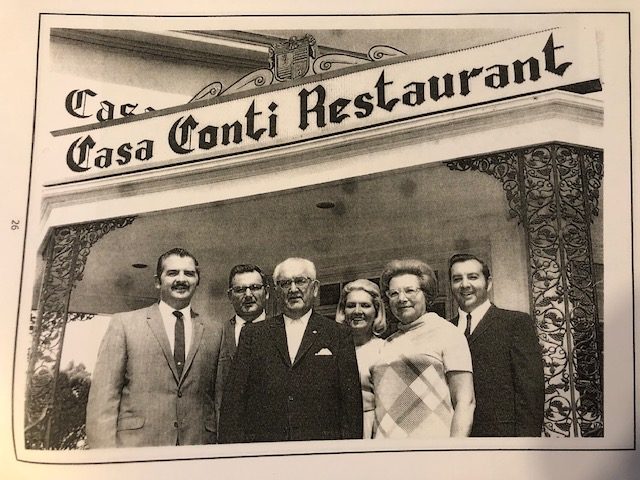
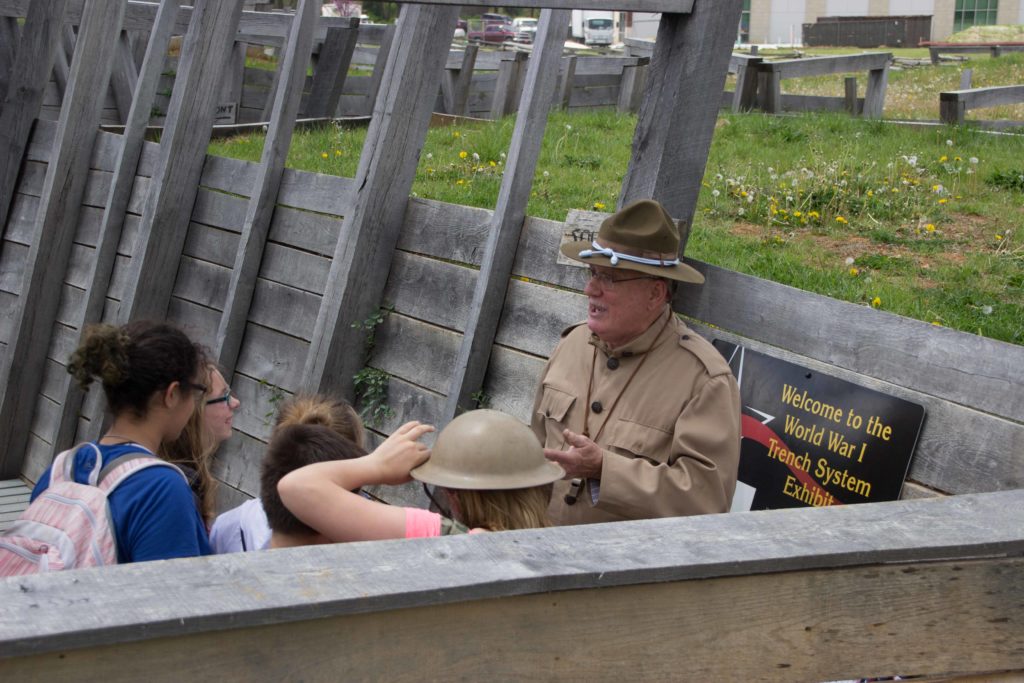
Like Fred, “Pop” was more than a restauranteur, Lockard says. He was also a WWI Veteran and an Italian immigrant who received his citizenship for enlisting in the US Army.
The 22-year-old cook was placed with the H Company, 315th Regiment, nicknamed “Philadelphia’s Own Regiment.” He attended Cook’s & Baker’s School at Camp Meade before shipping out.
“He was a cook behind a horse-drawn chow wagon in France,” Lockard said. “Pop made Army chow almost edible and was a welcome sight to the horrid conditions and trench warfare our troops faced.”
After the war, Pop remained in the military as part of Occupation Force and prepared a banquet for President Woodrow Wilson and family while they were in France for the Treaty of Versailles.
All three of his sons followed in their father’s military footsteps.
“Fred shared with me that when he was in the Army in the early 1950’s he was attached to the Atomic Cannon, a beast of a howitzer that took two Kenworth tractors, one in the front and one in the back, to haul a massive gun carriage with a 280 mm cannon that could fire nuclear shells. The drivers communicated by radio when driving,” Lockard said.
“This was before missiles. The cannon was always pointed toward the Soviet Union,” Lockard said.

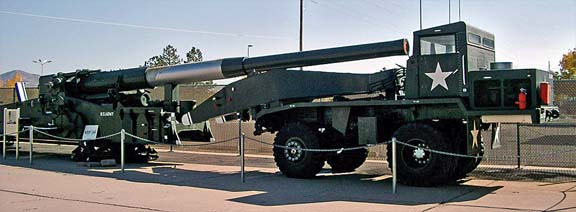
Much of Fred’s Army activity took place behind a typewriter, as he was the only one in his unit who could use it. He published all official documents for the Army’s administration: court martials, loss reports, plans of the day, as well as claims for damage to German homes, lawns, hedges, and homes.
Even in 1954 dollars, many claims were in the thousands, Lockard said.
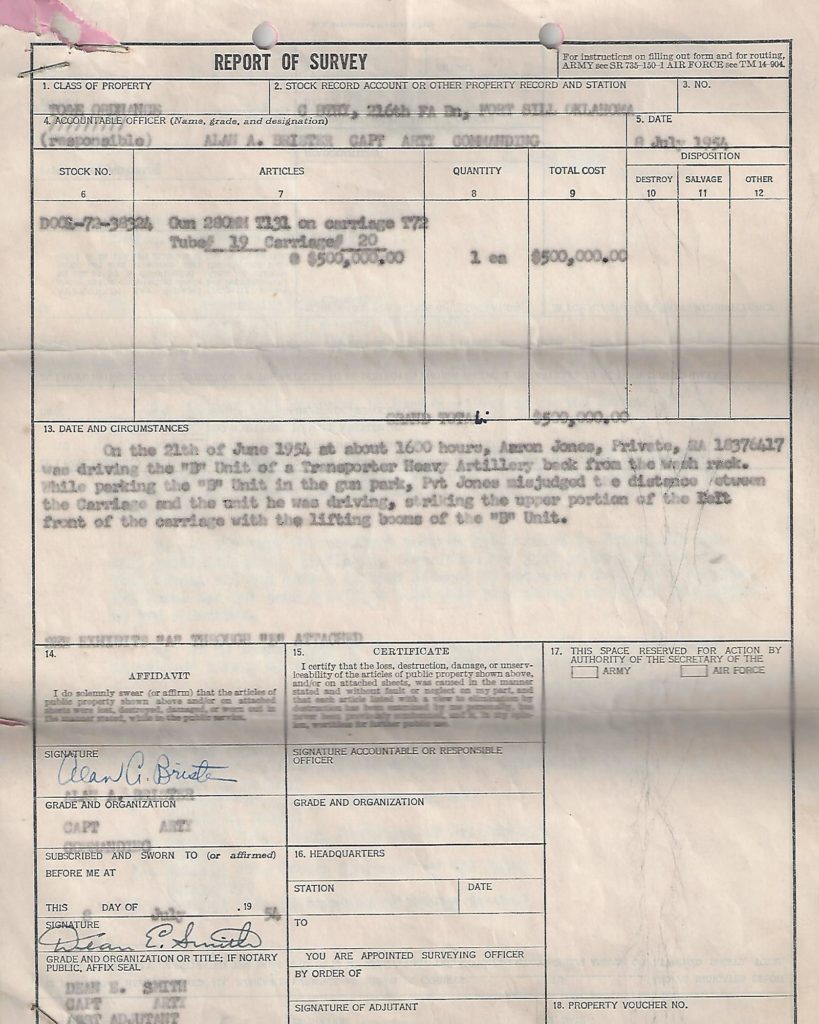
“Fred told me he had the best job, and that guys who operated the unit were always drunk from the night before from the German beer halls,” he said.
Fred Conti later used his typing skills to research and publish a comprehensive history of his father from his time in Italy through his Army career, including the travails he faced as an immigrant starting a new business.
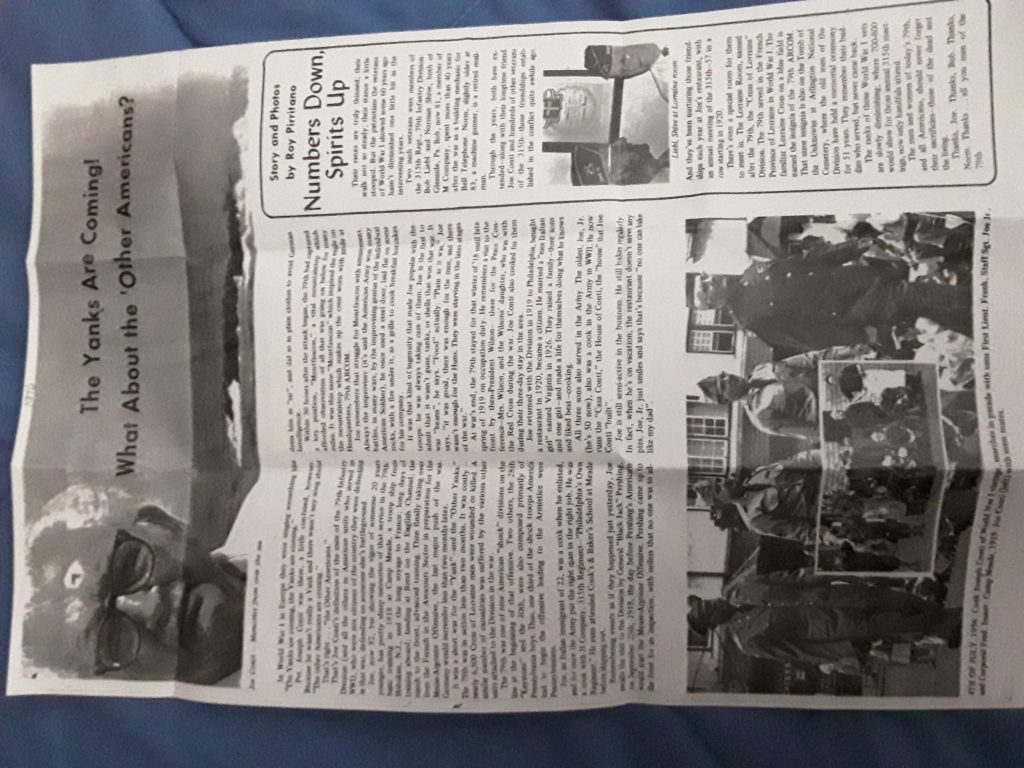
An excerpt:
Joe is the first to admit that it wasn’t guns, tanks, or shells that won that war. It was ‘beans’, he says. ‘Food’ actually.
‘Plain as it was,’ Joe says, ‘it was good, there was enough for the men, and there wasn’t enough for the Huns. They were starving in the later stages of the war.’
Joe returns with the Division in 1919 to Philadelphia, bought a restaurant in 1920, became a citizen. He married a ‘nice Italian girl’ named Virginia in 1926. They raised a family—three sons and one girl—and made a life for themselves doing what he knows and liked best—cooking.
Fun Fact #1: Over a 17-year period, Lockard helped to restore a 1918 Packard three-ton U.S. Army truck which now resides in the Citizen’s Motor Car Company Packard Museum in Dayton, Ohio.
Fun Fact #2: Prior to Casa Conti, the building was a stagecoach stop known as the Weldon Hotel where many of John Philip Sousa’s band members stayed when they played Willow Grove Park.
For our previous coverage of Casi Conti-turned-New Life Presbyterian, you can click here.
For all the latest news, follow us on Facebook or sign up for Glenside Local’s “Daily Buzz” newsletter here.
Photos: David Lockard

